Did you hear about modal fabric? In this article, I’m going over everything you need to know about modal fabric, from the manufacturing process to how it’s used and how to care for it.
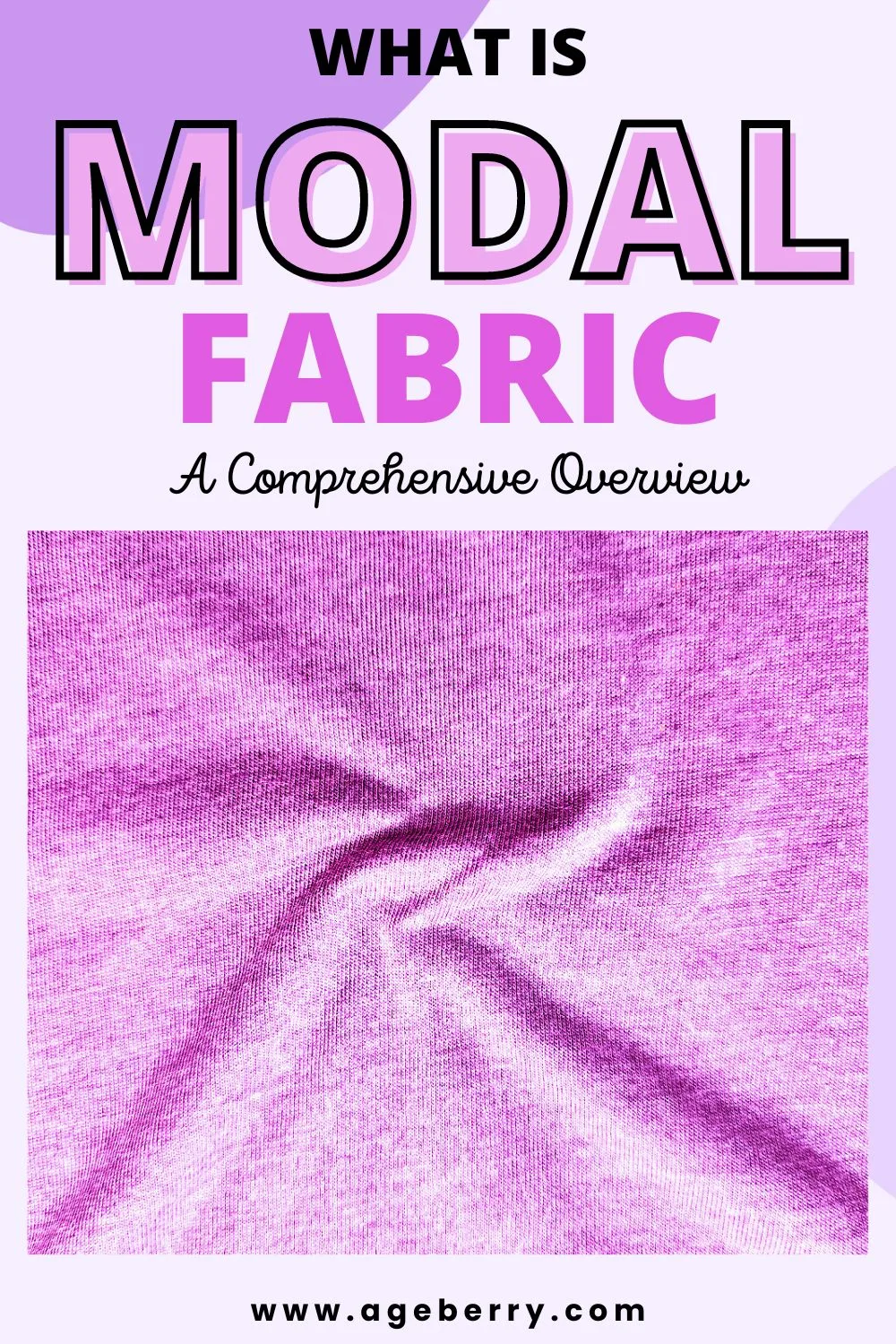
What is Modal Fabric?
Modal fabric is a type of rayon that is made from cellulose fibers, specifically European beech tree pulp. Modal is a semi-synthetic material that is known for its softness, breathability, and ability to hold color well.
Modal fabric has gained popularity in recent years as a more or less sustainable alternative to other synthetic fabrics as “the production process uses on average 10–20 times less water”.
For centuries, people only made fabric from natural fibers. Materials like cotton, silk, and wool were used to create everything that people wore and used. It wasn’t until almost a century ago, in the 1930s, that the first synthetic fabric (nylon) was invented.
But almost a century before that, the first semi-synthetic fabric (rayon) hit the market. Semi-synthetics are fabrics made with natural fibers that go through an extensive process to turn them into fabric. They’re basically half natural and half man-made, so they’re often referred to as semi-synthetics (or bio-based).
Since then, more semi-synthetic fabrics have been created and used successfully, and modal is one of them.
What Does Modal Fabric Feel Like?
Modal fabric feels very soft, almost silky and comfortable against the skin. It’s often compared to that of natural fibers like cotton and silk. It’s thin, lightweight, has a nice drape, and is also pill-resistant, giving it a sought-after smooth finish. Modal fabric also has a slight sheen to it, which gives it a luxurious appearance. There are plenty of reasons to love modal!
When we wear clothes, we look for things that look good and feel good. No one ever went to a clothes designer and said, “I want this dress in the scratchiest, stiffest fabric you have.” That’s because great clothing strikes a balance between function and comfort.
What Is Modal Fabric Made From?
Modal fabric is made from the pulp of European beech trees, and the process for turning beech tree pulp into a soft and smooth fiber is similar (but more eco-friendly) to the process used to make rayon.
The process starts with the harvesting of beech trees, which are then chipped and processed into wood pulp. The wood pulp is then dissolved in a chemical solution, which breaks it down into a thick liquid with a syrup-like consistency.

This liquid goes through specialized spinning processes to create long, continuous fibers. These fibers are then washed, bleached, and spun into yarn, which is then used to create the final modal fabric.
The manufacturing process of modal is similar to that of other rayon fabrics, but it involves additional steps that give modal its unique properties
Modal Fabric Pros And Cons
Although modal fabric is often compared to cotton, the two materials are very different. Every single fabric that people use has benefits and detractions. Here are some of the pros and cons of modal fabric.
Texture
Modal fabric has a very soft and smooth texture that is often compared to that of natural fibers like cotton and silk. It has a slight sheen to it, which gives it a polished and elegant appearance.
This fabric competes with silk and the finest types of cotton regarding how it feels against the skin.
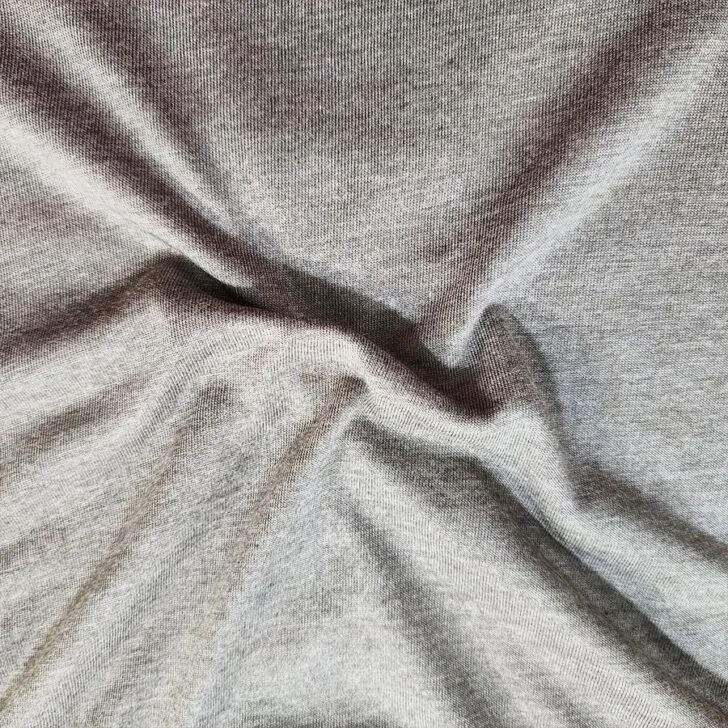
Modal Fabric Breathability
There is some debate over whether or not modal fabric is breathable. While some sources claim that modal fabric is not breathable due to its tightly woven fibers, others argue that it has excellent breathability.
However I can tell you that personal experience can often be the best indicator of a material’s properties.
I have made many garments from modal fabric, I can attest that it is indeed breathable and allows air to flow freely through the fabric and keep the wearer feeling comfortable.
In fact, I even purchased 6 yards of knit modal fabric and used it to create five tops and shorts. I may have gone a little overboard with my love for that particular modal fabric. Can’t you relate?
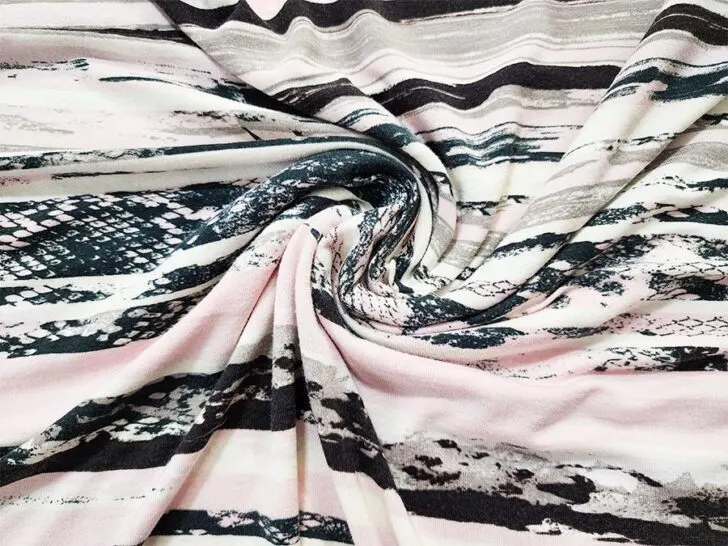
I know it sounds like a lot of fabric. But I saw this amazing print and I just had to have it. I didn’t want it to go to waste and just sit in my closet so I wanted to use it all. And now, I have some comfortable and stylish garments that I can wear in a variety of settings.

Modal Fiber Is Moisture-Absorbent
Modal fabric has excellent moisture-wicking properties.That means that it works very well as athletic clothing, underwear, and other clothing items that wick moisture away from the body and keep the skin feeling dry and fresh. This fabric quality helps the person wearing the clothing stay cool.
Modal Drapes Well For A Custom Fit
Modal behaves much like other knit fabrics. It hangs very well on the body, helping to create a custom fit without the need for sewing in darts to fit the garment to the body shape.
Is Modal Fabric Stretchy?
Yes, modal fabric has terrific stretching ability, which helps create a comfortable fit. In addition, it retains its shape. This material is ideal for use in fitted clothing and athletic clothing.
While modal fabric can technically be woven, it is most commonly used in knit form, especially in jersey knit which is very stretchy.
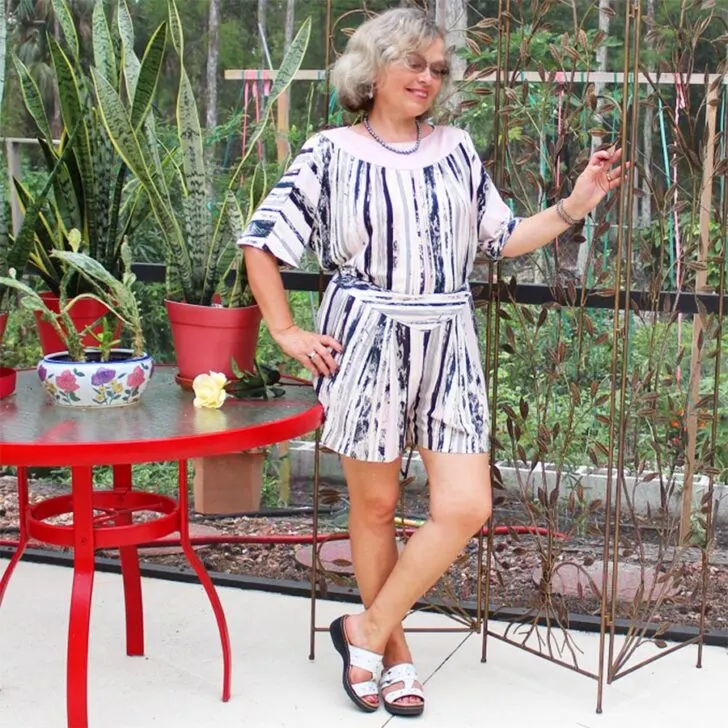
Durability
It’s very durable (even more so than cotton). Modal fabric will withstand many washes without pilling, fading, or wrinkling.
I think this is my favorite quality of modal. I washed modal garments so many times and still no pilling! At the same time, clothes I made from rayon are pilling a lot.
Modal Fabric Allergies
One of the drawbacks to this material is that it can aggravate allergies for some people. Although the fabric is made from beech tree pulp, any tiny amounts of chemicals that linger from the manufacturing process can trigger allergic reactions for people with sensitive skin.
Common allergy symptoms include red, irritated patches of itchy skin.
Does Modal Fabric shrink?
Modal fabric has some resistance to shrinkage, especially when compared to other types of rayon fabrics.
Some shrinkage may occur when modal fabric is washed or dried, but it is generally minimal and can be easily controlled with proper care. To prevent shrinkage, wash modal fabric in cold water and avoid using high heat when drying. Don’t over-dry it, as this can cause the fibers to shrink and become damaged.
How does Modal impact the environment? Is it Biodegradable?
Modal is not inherently sustainable or environmentally-friendly, but it can be a lower-impact fibre under certain circumstances.
https://goodonyou.eco/material-guide-ethical-modal/
The production process of modal uses less water and energy compared to other fabrics such as cotton, making it a more sustainable option.
Modal fabric is made from natural material ( beech tree pulp), which is considered a renewable resource as it can be replanted and harvested. The process of harvesting beech trees for the production of modal does not require the use of pesticides or fertilizers, which reduces the environmental impact of the production process.
Modal is also biodegradable and compostable, which means that it can break down naturally over time and will not contribute to environmental waste. When modal fabric is disposed of, it will break down into natural compounds, which can be used as fertilizer for plants. This makes modal a more sustainable option compared to synthetic fabrics such as polyester, which can take hundreds of years to decompose.
However, while modal is a more sustainable fabric option, it is not without its environmental impacts. The production process of modal still requires the use of chemicals, which can have negative environmental impacts if not properly managed.
Is Modal Fabric Eco-friendly?
Modal fabric is considered to be more eco-friendly compared to other fabrics like polyester due to its production process, which uses less water and energy. This makes it a sustainable choice for those looking to reduce their environmental impact.
The use of natural materials like beech tree pulp in the production of modal also makes it a more environmentally-friendly option.
Cost
The cost of modal fabric vary depending on a number of factors such as the quality of the fabric, the supplier, and the location.
Generally, modal fabric is considered to be a mid-range fabric in terms of cost, with prices that are comparable to other fabrics like cotton and rayon. Usually modal fabric costs more than pure synthetic fabrics but less than some natural fabrics, including linen and silk.
However, the cost of modal fabric can also be influenced by its popularity and availability. In some cases, modal fabric may be more expensive than other fabrics due to its eco-friendliness and sustainable production process.
What is Modal used for? Is it easy to sew?
Modal fabric is a versatile material that is commonly used in a variety of clothing items and accessories.
Its soft and silky texture, moisture-wicking properties and stretchiness makes it a popular choice for creating comfortable and stylish clothing items:
- blouses
- t-shirts
- dresses
- underwear
- pajamas
- bathrobes
- sportswear
- activewear
Additionally, modal fabric is a popular choice for creating bedding and home textiles such as sheets and pillowcases due to its absorbency and durability.
I bought some sheets from modal and they are excellent because they are soft, comfortable and durable.
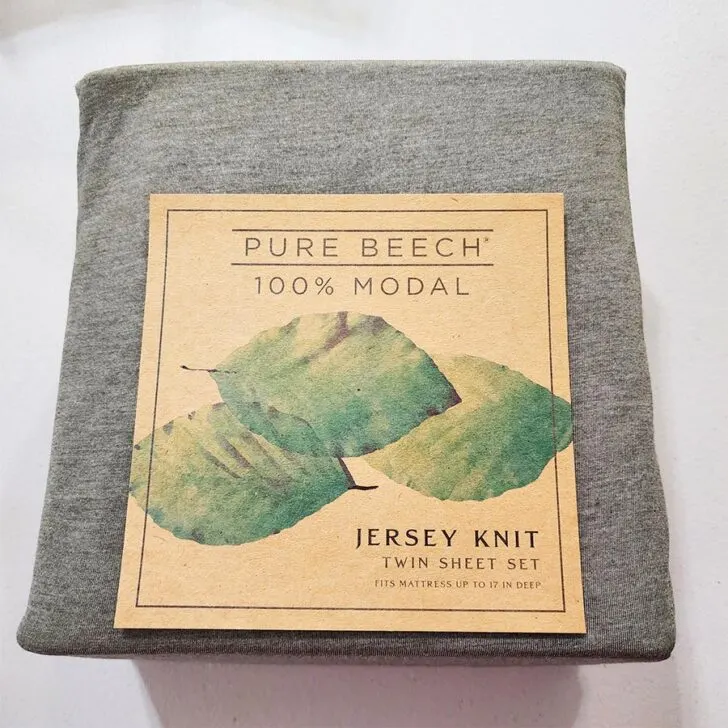
Due to its stretchy nature, beginner sewists may find modal knits a little tricky to work with at first. However, with some practice and the right tools and techniques, it can be a great fabric to sew with.
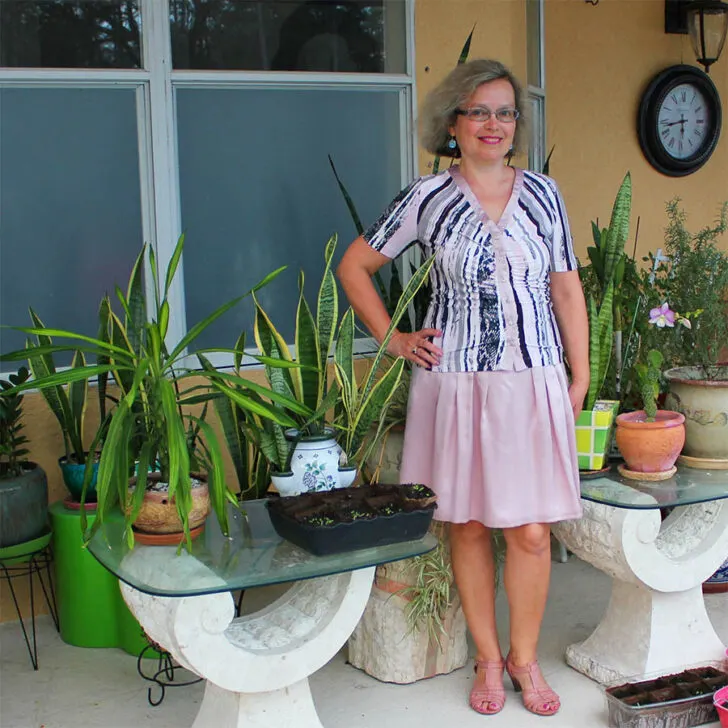
One of the best tools for sewing modal knits is a serger/overlocker. This handy machine creates professional-looking seams that are strong and durable. The machine will sew and finish the seam in one step, creating a neat and clean finish.
✅ Related article: Best Serger For Beginners: Serger Buying Guide in 2023
Sergers accommodate the stretchiness of the modal fabric. Serger stitches prevent the seams from popping or breaking when the fabric is stretched, which is important for clothing items that need to be comfortable and flexible.
While sergers may seem intimidating at first, they are actually easy to use once you get the hang of it. Many modern sergers have user-friendly features such as color-coded threading or even self-threading, which makes them accessible even for beginners.
If you’re not familiar with sergers, you can visit a guide on my site What Is A Serger & What Can I Do With It?
And if you’re new to sewing with knit fabrics, I have a tutorial that can help you learn how to sew knit fabric like a pro. It’s called How To Sew Knit Fabric | 23 Expert Tips For Beginners
Modal Fabric vs. Cotton
Both modal fabric and cotton have their own unique properties and characteristics. I like to use both for my sewing projects and I like to wear both.
When choosing between the two, consider your specific needs and preferences to determine which fabric is the best choice for your project.
Unless you react negatively to modal fabric, it has the edge over cotton. It’s often softer, shrink and wrinkle resistant, more moisture resistant, and even can be more durable than cotton.
While modal fabric has gained popularity in recent years, the variety of modal fabrics available on the market is still relatively limited compared to cotton.
If you search for modal fabric by the yard on Amazon, you will find that the selection is much smaller compared to the number of cotton fabrics available. This can make it more difficult to find the right color, pattern, or weight of modal fabric for a project.
The same is true for fabric stores like Joann in the USA and Fabricland in Canada. These stores carry a lot of rayon fabrics, but it’s difficult to find modal fabrics there.
Modal Fabric vs. Polyester
Polyester is a fully synthetic material made from petrochemicals. It is used in a wide range of clothing items and textiles. Polyester is known for its durability, wrinkle-resistance, and quick-drying properties.
While polyester is not as eco-friendly as modal fabric, it is often less expensive and more widely available.
Modal fabric is softer and silkier compared to polyester, making it a more comfortable option for garments that touch the skin. However, polyester is more durable and wrinkle-resistant compared to modal, making it a good choice for clothing items that need to withstand wear and tear.
✅ Related article: The Chemicals We Wear Everywhere
Tencel Modal Fabric
Although Tencel and modal fabrics use a similar manufacturing process, Tencel is a brand name of the fabric lyocell. Additionally, modal was created before Tencel and is considered second-generation rayon.
Tencel was created later, is sometimes called third-generation rayon, and uses eucalyptus tree pulp rather than European beech tree pulp.
Types Of Modal Fabric Blends And Their Uses
Most commonly, clothing manufacturers will blend modal fibers with cotton, spandex or polyester to add strength and increased stretchability.
Modal fabric blends are becoming increasingly popular due to their unique properties and versatility. Here are some common types of modal fabric blends and their uses:
Modal-cotton blend: This blend combines the softness and breathability of modal with the durability and versatility of cotton. Modal-cotton blends are commonly used in clothing such as t-shirts, dresses, and underwear.
Modal-spandex blend: This blend combines the stretchiness of spandex with the softness and moisture-wicking properties of modal. Modal-spandex blends are commonly used in sportswear and activewear due to their ability to provide comfort and flexibility.
Modal-polyester blend: This blend combines the softness and moisture-wicking properties of modal with the durability and wrinkle-resistance of polyester. Modal-polyester blends are commonly used in clothing such as dresses, blouses, and jackets.
Modal Fabric Care
This material is very low-maintenance, which makes it easy to care for. Check your clothing labels first in case modal is blended with other fabrics that could change these basic care guidelines.
How To Wash:
Here are some tips on how to wash something made from modal fabric so it maintains its softness and durability.
#1. Check the care label: Before washing modal fabric, always check the care label for specific instructions. Some modal fabrics may require hand washing or dry cleaning, while others can be machine washed.
#2. Use cold water: When machine washing modal fabric, use cold water to prevent shrinkage and damage to the fibers. Avoid using hot water, which can cause the fabric to lose its shape and color.
#3. Use a gentle detergent: Use a mild, gentle detergent that is specifically designed for delicate fabrics. Avoid using bleach, because it can damage the fibers and cause discoloration.
#4. Wash on a gentle cycle: Set the washing machine to a gentle cycle to prevent the fabric from stretching or snagging. Avoid washing modal with heavy or abrasive fabrics.
#5. Air dry or tumble dry on low heat: After washing, air dry the modal fabric flat or tumble dry on low heat. Avoid using high heat.
How To Iron Modal Fabric
If you wash and dry modal fabric correctly, there may be no need to iron it. One of the benefits of modal fabric is that it is relatively low-maintenance compared to other fabrics. It is less prone to wrinkling.
But if you decide to iron modal follow these tips.
#1. Use a pressing cloth: Place a pressing cloth between the iron and the modal fabric to protect it from direct heat. This will prevent the fabric from scorching or burning.
✅ Related article: Pressing tools I use for sewing
#2. Set the iron to a low or medium heat: Modal fabric is sensitive to heat, so it’s important to use a low or medium heat setting on your iron. Avoid using high heat, which can damage the fabric and cause it to lose its softness and sheen.
#3. Iron in a circular motion: When ironing modal fabric, use a circular motion to avoid stretching or pulling the fabric.
#4. Iron on the wrong side: Always iron modal fabric on the wrong side. This will help to maintain its smooth and silky texture.
Modal Fabric Manufacturers
Today, the Austrian company Lenzing AG produces most modal material. They have patented their material to sell it under Lenzing Modal, China Modal, and Formatex. In addition, the company created two lighter versions of the material called Modal Air by Lenzing and MicroModal!
Where To Buy Modal Fabric
Modal fabric can be purchased from some online and in-store retailers. Although modal fabric has become increasingly popular in recent years, the selection of modal fabrics on the market is still relatively limited compared to other fabrics.
Here are some places where you can buy modal fabric.
Amazon: Amazon offers some modal fabric by the yard, including modal-cotton blends, modal-spandex blends, and modal-polyester blends.
Etsy: Many Etsy sellers offer a variety of modal fabrics in various colors and patterns, and also blends, including modal-spandex and modal-cotton blends.
Mood Fabrics: Mood Fabrics is a well-known fabric store that offers a variety of high-quality fabrics, including modal fabric. You can find a selection of modal fabric by the yard on their website, including solid colors and prints.
What Is Micro Modal Fabric
The main difference between Modal and Micro Modal is in the fineness of the yarn used to make the fabric.
Micro modal is a specialized type of modal fabric that is made using a finer yarn compared to regular modal fabric. This results in a fabric that is even softer, more lightweight, and more breathable than regular modal.
The finer yarn used to make micro modal allows for a denser concentration of fibers in a single garment without adding weight, which makes micro modal even sleeker than modal.
Micro modal is more resistant to pilling and has a more luxurious feel than regular modal.
I hope this in-depth look at modal fabric gives you all the information you need to try using modal fabric in your projects. I know you’ll appreciate its good qualities enough to overlook its downsides!
If you found this guide helpful, consider saving this pin (see below) to your fabric board so you can easily access the article later when you need information on modal fabric. Be sure to follow me on Pinterest for more tips, tutorials, and inspiration related to sewing, fabrics and fashion.
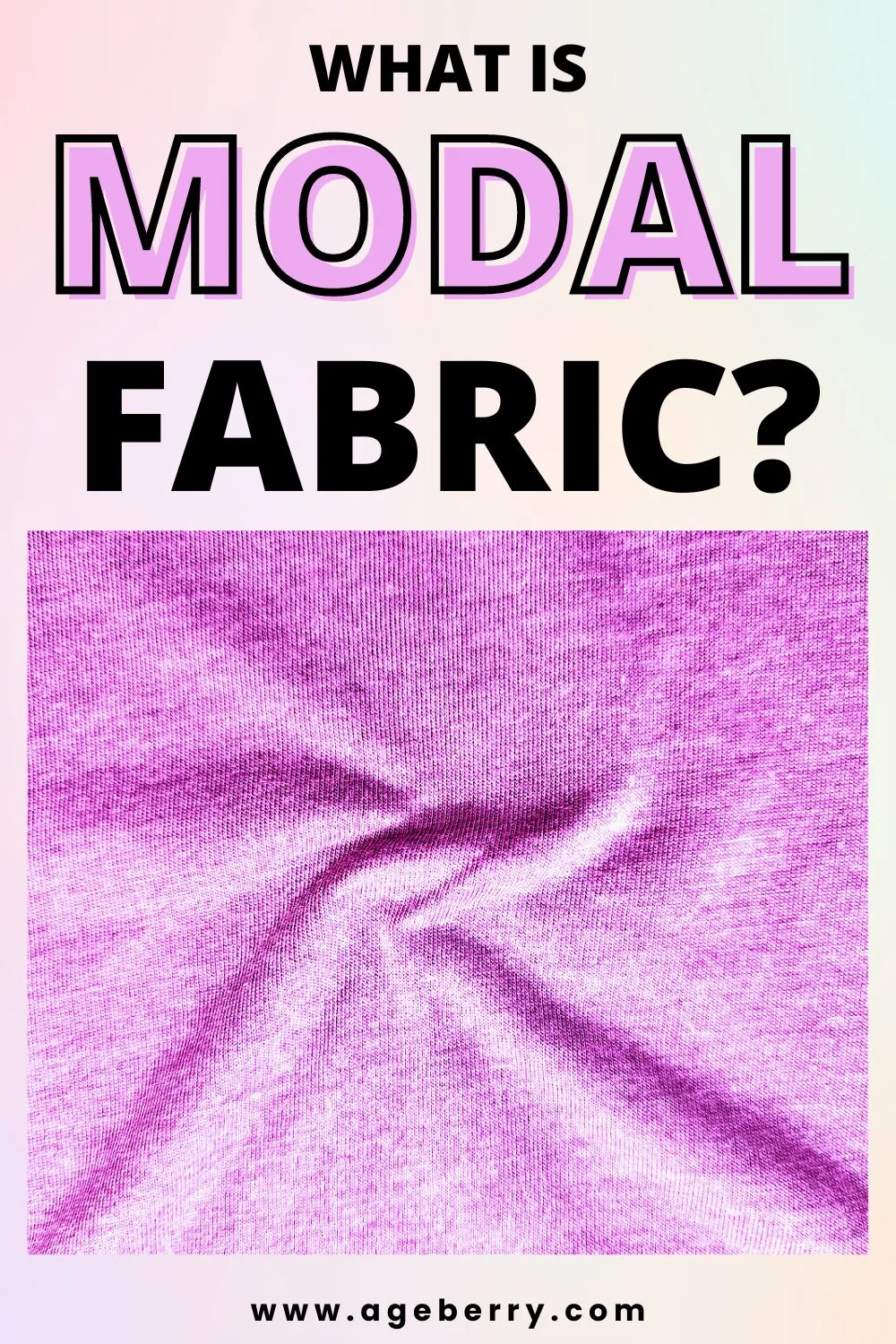
Interested in learning more about different types of knit fabrics? Check out my post All About Modern Types Of Knit Fabric for a detailed overview of the various knit fabrics available on the market today.
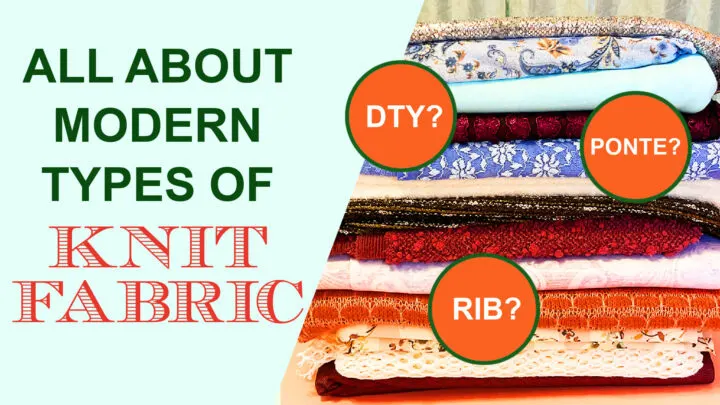
latest posts
- Knot a Problem: Easy Ways to Secure Short Thread Ends
- Ever Tried This on Your Serger? This Differential Feed Feature Will Amaze You
- Ditch My Sewing Machine? Not in This Lifetime!
- Adorable DIY Needle Book | Easy Tutorial for Beginners
- Master the Seam Ripper: Your Ultimate Guide to Precision Stitch Removal
- Think You Know Zippers? This Installation Guide Might Surprise You
- Why Does Your Seam Ripper Have a Red Ball? Discover Its Purpose!
- Topstitching Troubles? This Simple Trick Will Turn It Around Instantly!
- How to Sew Shirring: A Step-by-Step Guide to Elastic Thread Gathering
